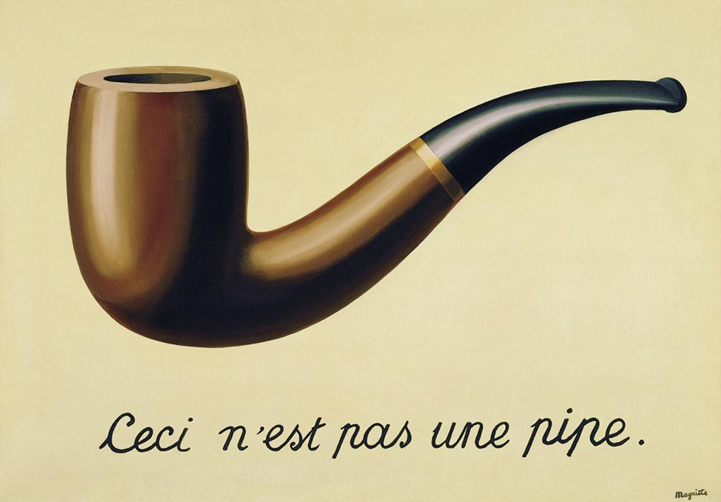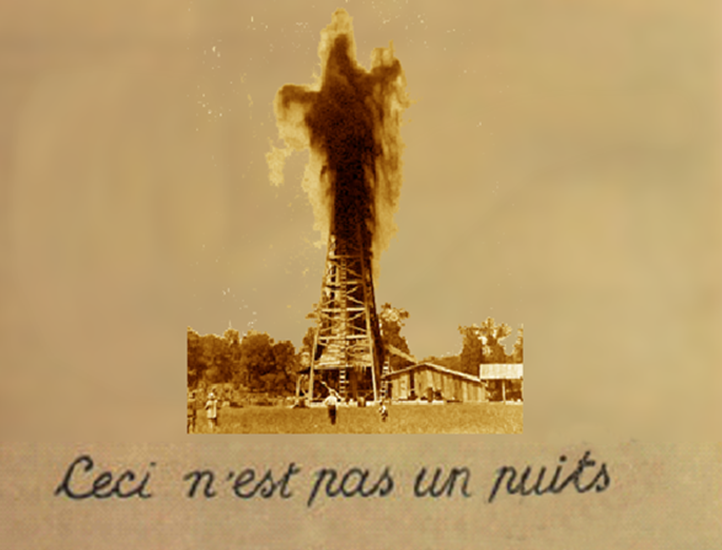
| Home | FAQs | Book Contents | Updates & News | Downloads |

In 1929 when the Belgian artist Rene Magritte painted "The Treachery of Images", his famous rendition of a pipe, it would be a few decades before the first real computers were to be constructed. So we can be fairly sure that his intent was to point out the tendency to confuse an image of a thing with the thing itself, rather than this being an amazingly prescient prediction of the perils of data modelling. However, as someone experienced in the vagaries of Oil Industry sub-surface data handling is hard to look at this picture and not be reminded of the challenge of describing subterranean features (but maybe that's just me).
I once had a driller tell me that the name he used for a well was the "real" one, despite the fact that every other group in his company used a different one (OK, to be fair the rest of the company used slight variations on a single name rather than exactly the same one). The point is that in "reality" as far as this driller was concerned it didn't matter how many people used the alternate name, it still would never be the "real" one. Partially this is about tradition, a name that was good enough for the guy that taught me should be preserved, if it is changed that demeans me and my colleagues. But a much bigger issue is the uncertainty about what is being named, the good people at PPDM have provided an invaluable service to the E&P world with their "What is a Well" initiative discussing this exact topic. If you want to really stun those outside our industry just tell them that the definition of what a well is has been a matter of active debate for more than 20 years (and is still not quite universally agreed).

With naturally occurring sub-surface features this becomes even more interesting. Geomodellers might talk at though a fault is a single physical thing which behaves with some defined characteristics, but they, of course, know that this is a simplification that makes it easier to do geomodelling. All the key concepts in geologic modelling are, naturally, simplifications that make geologic modelling easier. Just as the concepts in reservoir modelling are those that make reservoir modelling easier and those production people use ideas that make the study of production easier. How could these distinct specialisms ever do anything different from that? If you are a good software designer, you will focus on helping your client specialists to do their work in as effective way as possible, which means presenting their concepts in ways that are familiar to them. Drilling applications use drilling concepts, geomodelling applications use geomodelling concepts. If two of these domains happen to both call something a "fault" that doesn't mean they share very much in the representation, just as two paintings of a single person can be very different but still both show the same sitter. The thing we have to remember, just as Magritte said, is that the data describing a well is not a well.
Article 13 |
Articles |
RSS Feed |
Updates |
Intro |
Book Contents |
All Figures |
Refs |
Downloads |
Links |
Purchase |
Contact Us |
Article 15 |